Articles
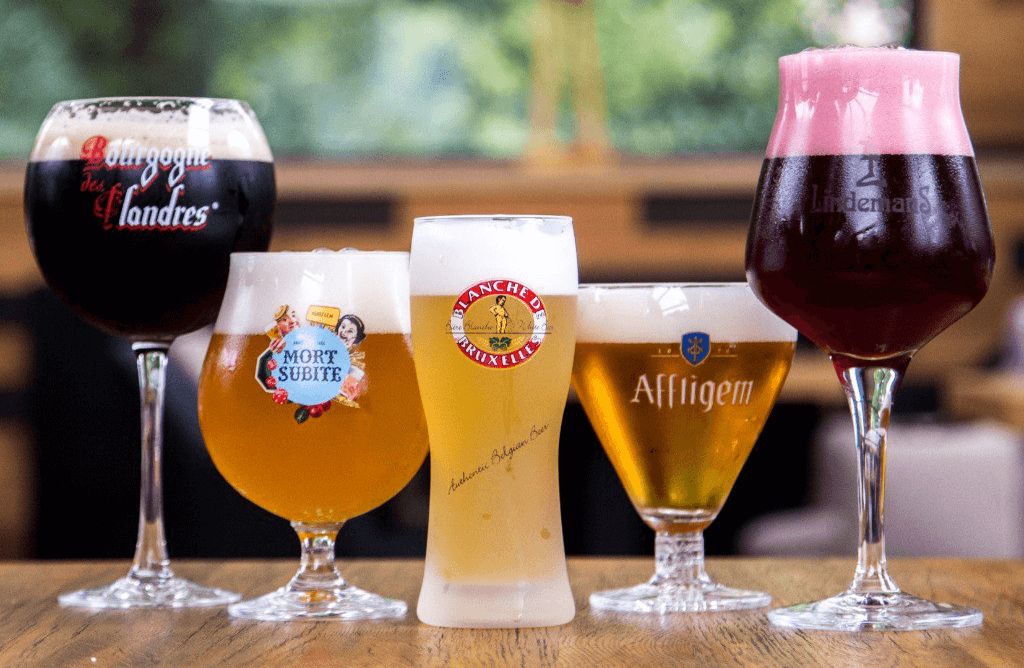
All about beer tasting: from preparation to evaluation
Quality beer is always a noble beverage that reveals a multitude of flavor and aromatic nuances. But it is practically impossible to feel each of them during ordinary consumption. But a competent tasting can reveal all the shades of flavor. But how to prepare for it, and most importantly, how to conduct it correctly? If you want to feel like a beer sommelier, this article is for you. How to prepare for beer tasting The first rule is to take a break between the last meal and the beginning of the tasting. It should be at least an hour — during this time the taste buds are fully activated. The process itself should take place in a quiet and comfortable place — without bright lights, loud music and extraneous odors. Drinks should be served in the right glasses. For example, for ale usually use flutes, and for lager — narrow glass glasses. In this way, the drinks reveal their flavor as brightly as possible. It is also important to choose in advance the dishes that will accompany the tasting. They should not distract attention from the taste of the beer itself. Often hard cheeses are used for this purpose. And the last thing is to choose the varieties that will participate in the tasting. Experts do not recommend evaluating light and dark beer at the same time. It is also not worth tasting too many varieties at a time — five is quite enough. How to do a tasting The optimal temperature of the beverage for tasting is 10-12%, regardless of the variety. For each sample, 0.1 liter of beer is enough. You should start with lighter beers, gradually moving to stronger ones. Then — to the tasting itself. It is necessary to start with visual assessment of the drink: to study its color, transparency, presence of sediment, color and thickness of the foam cap. Each variety has different characteristics, so there are no universal tips. After that it is necessary to assess the flavor of beer. It is necessary to unwind the glass in your hand so that a slight whirlpool is formed inside. Then immediately bring it to your nose and inhale with a full chest. The last stage is to evaluate the taste. Take a big sip of the drink so that the beer fills your mouth, spreads across the palate and tongue. Unlike wines and some types of spirits, which are usually sipped at a tasting, beer is sipped to taste all the flavor nuances. Evaluation parameters When evaluating a fragrance, it is important to focus on the first impression, as the sense of smell is dulled with each inhalation. Professionals usually use a special table for making a verdict, where about a hundred shades are collected. Amateurs are hardly able to immediately catch anything but the dominant notes. It can be flowers, fruits, caramel, chocolate, burnt sugar, spices, citrus. The flavor is easier, as there can be only four variants — sweet, sour, salty and bitter. In many varieties, bitterness and sweetness are the most pronounced: the former is from hops, the latter from malt. It is also worth paying attention to the other notes — they can be different depending on the drink. And remember that tasting is a subjective process, as your own emotions and experience are of great importance. And if you want to taste beer in a good company, come to any beer restaurant of Lambic chain — we have a lot of interesting varieties, proper serving and cozy atmosphere. We are waiting for you!
14 June 2024
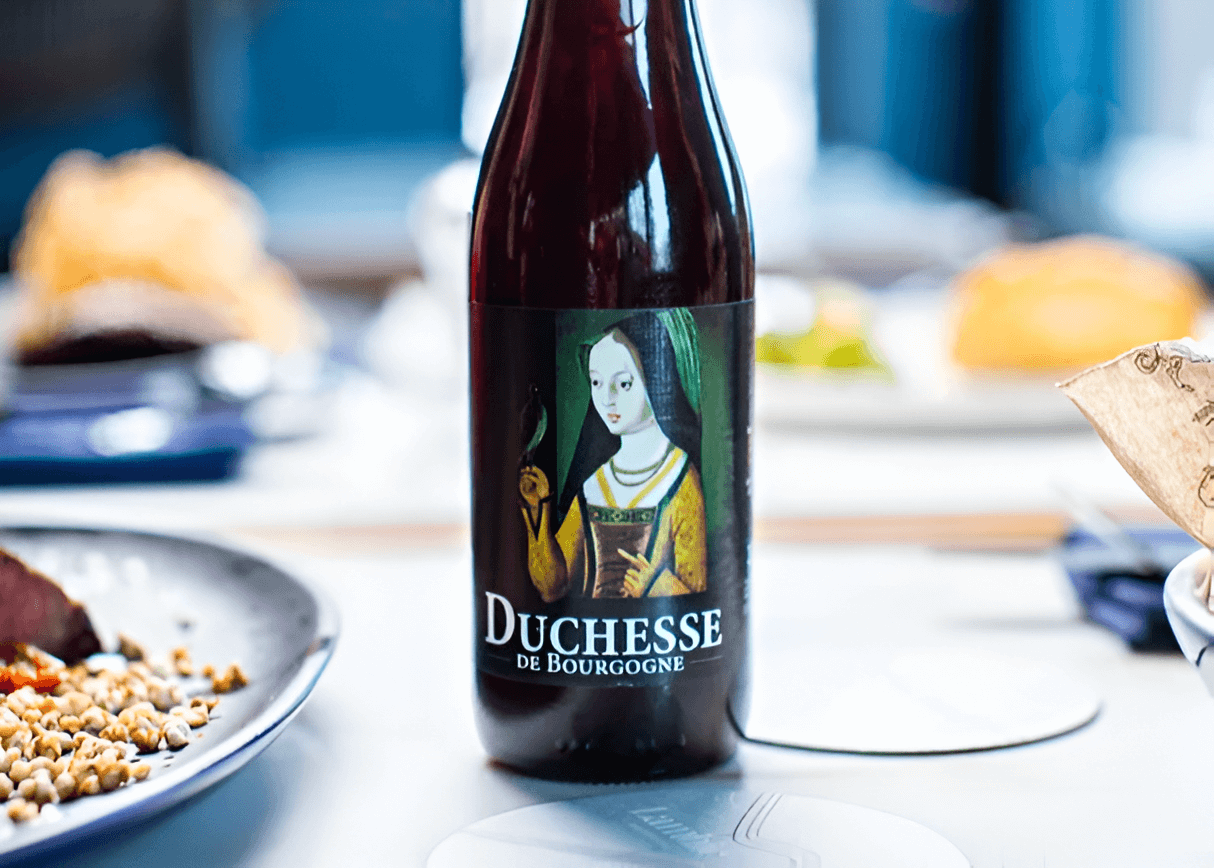
Flemish or Flanders ales
In 1860, Belgian Eugene Rodenbach went to England to learn brewing. At that time, the most popular beer there was the London Porter. It was aged in giant barrels of 100,000 liters. The more it was aged, the drier and more sour the beer became. Not everyone could afford to drink beer that had spent several years in a barrel. That’s why in pubs they mixed beers of different ages into one glass. On his return to Belgium, Eugene reproduced the porter production technology at the Rodenbach family brewery and obtained the first samples of Flemish ale. The essentials about production technology Basic facts you should know about the production of Flemish ales: — When brewing, predominantly light malt is used with a small addition of dark, roasted varieties. — Unflavored, old hops are used. It is added at the very beginning of brewing so that it does not give bitterness and flavor, and does not interfere with the balance of the ale. — Mixed fermentation is used. After brewing, cultured brewer’s yeast and lactic acid yeast are added: the former converts the sweetness from the wort into alcohol, the latter adds sourness. — The beer is aged in a barrel or tank. From 8 months to 3 years the wort is kept in special oak tanks. They give the beer wine notes. — Aged and young beer is blended. After the beer has been in the barrel for more than a year, it is mixed with less aged beer. This is how you get the perfect blend of flavors. FlandersRed Flemish red ale is produced using red-brown malts and aged in oak barrels for two to three years. As a result, the beer interacts with sour bacteria, which imparts a characteristic sourness to the flavor. To reduce the tartness, younger, sweeter beers are added, which increases the flavor and complexity of the finished brew, and adds carbonation (carbonation) to the final product. Flemish red ales tend to be pungent and bracingly tart, with a fruity and winey flavor. The aroma is winey, with hints of fruit. The flavor is dominated by vinegar sourness, plum, cherry, currant and orange. Also in the red ales one can feel the oak barrel. It opens with notes of vanilla, wood, spices and tannins. Red Flemish ale is produced with a small addition of dark roasted malt, but still the base is light. The fruity and sour profile of the drink dominates. Oud Bruin Another mixed sour ale from Flanders is called Oud Bruin, or flanders brown — a Flemish brown ale. Although it is often considered the equivalent of Flemish red ale, these styles are quite different (also, Oud Bruin originated in East Flanders, not West Flanders — this matters to the Flemish). While Flemish red ales have a pungent flavor, Oud Bruin tends to be more malty and somewhat sweeter, with notes of ripe plums and raisins, and much less tart. As in Flemish red ales, the fermenting bacteria traditionally come from tall oak barrels where the beer is aged. But many modern versions are fermented in stainless steel vessels, with yeast and bacterial cultures added. In brown Flemish ales, more dark, heavily roasted malts are added. Therefore, bread notes and caramelization are felt in the flavor. The flavor and aroma of brown Flemish ales is fruity and malty with sourness. It contains plums, dates, dried fruits. Maltiness is expressed in hints of caramel, chocolate and molasses. The longer the brown ale is aged, the more distinct the acidity is felt. It’s interesting Despite its Belgian origins, the inspiration for the Flemish red ale is likely to have come from the sour blended porters that once dominated the English beer market. The godfather of the style is considered to be Eugene Rodenbach, who trained in brewing in England and brought porter blending techniques to Belgium. Rodenbach created the first examples of Flemish red ales at his family brewery. Rodenbach sour ales, with their deep red color, are characterized by a berry and plum flavor with notes of balsamic vinegar and an inherent sourness that is created by the bacterial fermentation of the wort in oak barrels. There are many articles on the internet that say roughly the same thing, yet one says Flemish ale and the other says Flanders ale. And any person, even a biergic, might have a question: what is the right one? Both red and brown Flemish ales are produced in Flanders, a region in the north of Belgium. But Flanders is inhabited by the Flemish. If we talk about the Rodenbach brewery, and they are the originators of this style, they have «FLEMISH» written on the bottle. The BJCP (world beer style chart) also has a section for «Flemish ales.» The most famous Flemish ale that comes immediately to mind is Bourgogne des Flandres. It is made using a different technology from the classic Flemish ale. It’s also labeled «lambic» or «brune» on the bottle. To find a classic Flemish red ale on the store shelf, look for «flemish» on the label and read about the beer’s production. It should be aged in barrels. If you want to find a brown Flemish ale — the label will say «oud brun». And you can try it in any beer restaurants of the Lambic chain. We are waiting for you!
16 May 2024
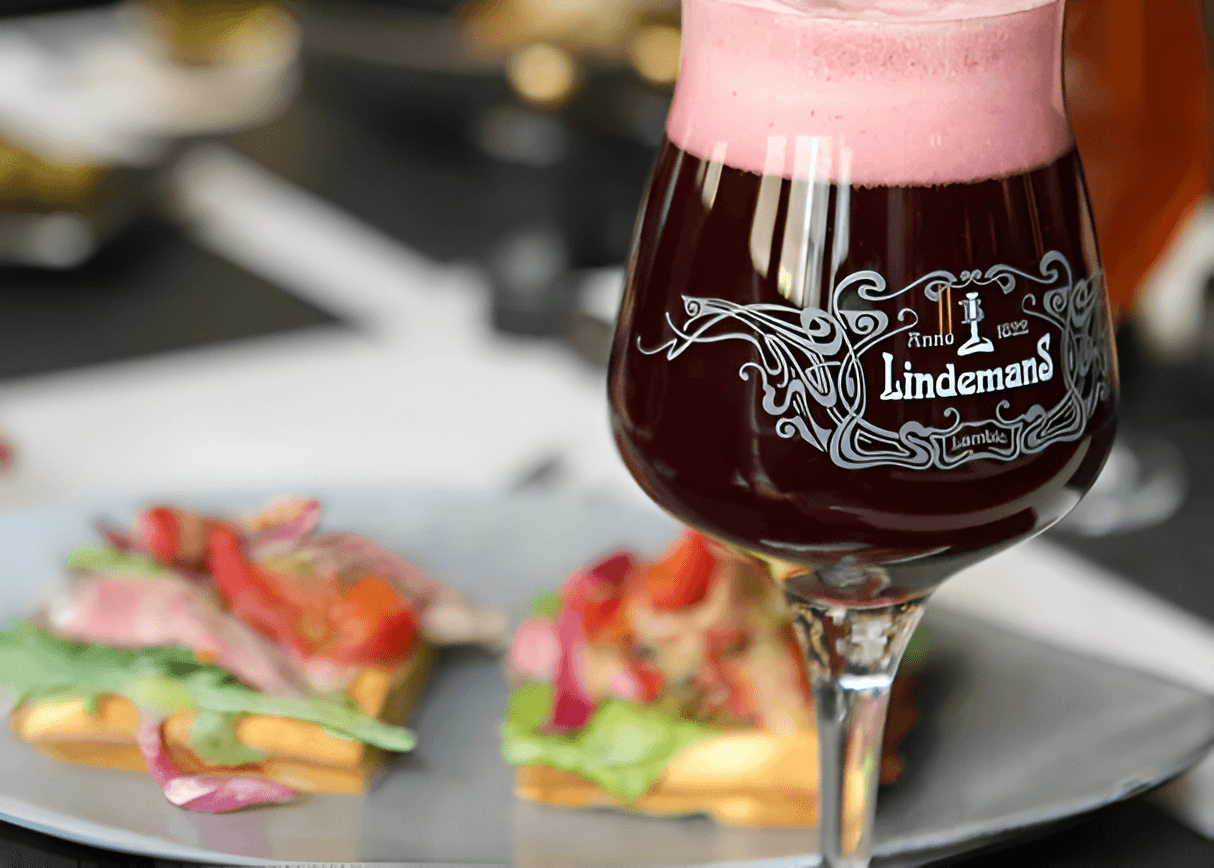
Cherry flavored: Belgian classic Lindemans Kriek
Every beer trend has its fans, and fruit varieties are no exception. Fruit- or berry-flavored beer is ideal for a hot summer day, when you want something sweet and refreshing at the same time, or to accompany a dessert. Moreover, beer restaurants offer a wide range of such drinks — you can order beer with notes of peach, apple, coconut, strawberry and so on. But there is one variety that is worth talking about separately. This is a Belgian kriek with a pronounced flavor of juicy cherries. Many breweries offer their own variants of kriek, but the unspoken classic is considered to be the beer from the family brewery Lindemans. Let’s find out why it’s considered special. Product and producer The Brouwerij Lindemans brewery dates back to 1822. It is located in the Senna Valley in the small town of Flesenbeek. The air in this area is saturated with special microorganisms. This is what predetermined the fate of the future brewery. These bacteria, or, as they are also called, wild yeast, began to be used to produce lambic — a beer with a pronounced dry cider flavor. Kriek is one of the varieties of lambic. Before filtration and pasteurization, sour cherry juice is added to the wort, which gives the drink a recognizable taste. A specific variety, Charbecq, which grows in the vicinity of Brussels, is considered to be the benchmark. Lindemans Kriek is considered to be one of the iconic Lindemans products. The quality and excellent taste of the drink has long been recognized all over the world — the gold medals of the World Beer Awards Beer Recognition and International Awards, as well as platinum medals of the World Brewing Congress and World Beer Championship are proof of this. Main characteristics Lindemans Kriek has a juicy full flavor with notes of freshly picked cherries. where acidity and sweetness are in perfect balance, as well as a refreshing berry aroma. It also has a very beautiful color — red, slightly hazy. There is even a beautiful legend about it — it is said that one of the crusaders wanted to create a beer the color of the blood of Jesus Christ. Whether his descendants participated in the production of the cry — it is unknown, but the desire in any case was realized. Such beer can be served as an aperitif, as well as with pork, poultry or soft cheeses. And you can try it in any restaurant of Lambic chain. We are waiting for you!
16 May 2024
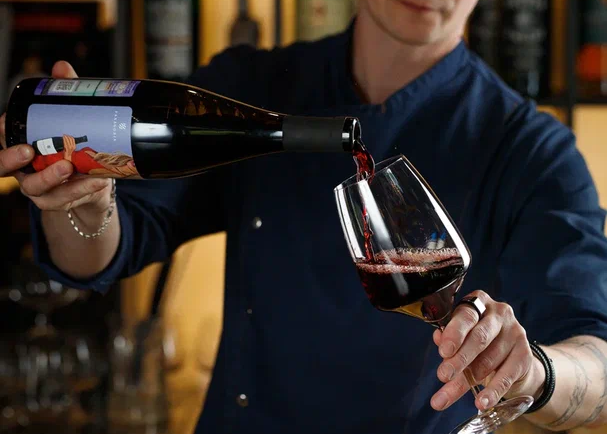
Rise of the machines: can artificial intelligence replace tastemakers
No one disputes that neural networks are taking over the world. But many people still believe that in some professions, humans are irreplaceable — for example, in creativity, where it is not the quality of the work that is valued above all, but the emotions that the creator has put into it. And what about tasters, particularly of alcoholic beverages — can artificial intelligence fully replace them? Let’s get to the bottom of it. Pros and cons Machines have been used in the production of alcoholic beverages for a long time — for example, technology monitors the temperature of fermentation and many other processes. But the final decision — whether to release the product into the world or not — is still made by a human being. It is professional tasters who taste the finished drinks and give a verdict on how well they are made. It is known that there have been many attempts to create an artificial «nose» that would capture and recognize the aroma of drinks. But as experiments have shown, it is too early for it to compete with humans — humans are capable of capturing up to a trillion flavors. In addition, experienced tasters can make predictions on the smell, how the drink will evolve with longer aging, and this artificial intelligence is all the more beyond the control. As experts themselves say, they have been learning the art of tasting for dozens of years. And it is simply impossible to put so much experience into a program so that it could evaluate a product in the same way as a human being. In addition, everyone evaluates drinks differently, focusing on their individual preferences, sensitivity, approach. Trying to systematize this is like having only one critic evaluate art, books, or movies. Neural networks can derive the perfect formula for drinks, but are hardly able to properly evaluate the diversity from different angles, as humans can. It is also important to remember that the sense of taste is made up of many elements. Among them are sight, smell, touch and even individual associations. In addition, it takes a very extensive vocabulary to not just recognize but also describe a flavor correctly. Professional tasters are very careful with their «working tools» — the taste buds. For example, they do not use perfume during tastings, do not work with colds, and the process itself usually takes place in the morning, because at this time the receptors are most sensitive. This is why experienced professionals are so valued around the world. And this once again proves that so far artificial intelligence can’t even come close to competing with them. And all amateur tasters are invited to the beer restaurants of the Lambic chain, Hundreds of the best beers from all over the world are waiting for you to try them!
16 May 2024
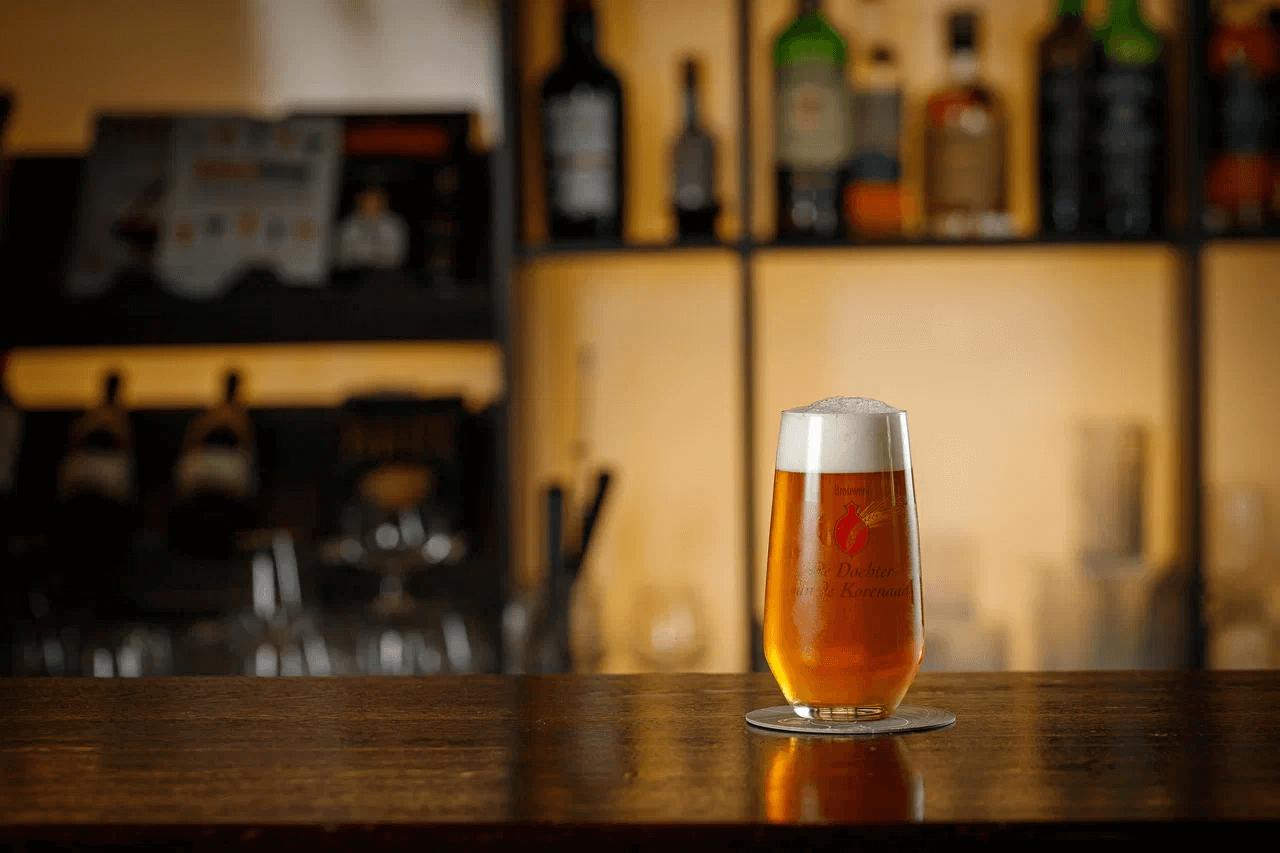
Secrets of production: what beer is made of and how it is brewed
The first beer appeared in the 7th century BC. Most likely, it bore little resemblance to modern varieties, and the production technology differed considerably. We won’t be able to find out how the ancient Sumerians prepared their drink, but it’s easy to tell you what ingredients and how beer is brewed today. Let’s go! The subtleties of the process The basis of any beer is malt. This is the name given to the seeds of cereals that have undergone special fermentation. Grains can be different — wheat, barley, rye and even corn. After the grains are ripe, they are sent to a crusher to be pulverized. Once the grains are completely broken, the next stage of production comes — mashing. This is the name given to the process of mixing malt with water. The resulting mass is heated to a high temperature — from 60 to 72 degrees Celsius. This is necessary for the malt to release starch, which is then broken down and transformed into simple sugars. It is they that become the alcohol base of the future drink. At this stage, the malt and water become wort — a sweet mass that undergoes fermentation. The wort is filtered to get rid of residual grains, and then boiled. The high temperatures precipitate the proteins that will later become the foam, and the drink itself is sanitized. Then hops are added to the wort, either during boiling or immediately after. It is responsible for the aroma of the future drink and bitterness in its taste. The longer the hops are boiled, the more pronounced the bitterness will be. But that’s not all. The resulting mass is again cleaned from the remnants of grains to make the drink even more transparent. A special decanter or whirlpool is used for this purpose. Then the wort is cooled — from 100 degrees to the fermentation temperature. Modern production facilities use a special device for this purpose — a heat exchanger. After that, the mass is placed in a container where it will ferment. To start the process, yeast is added to the wort. They turn sugars into alcohol and carbon dioxide. It is the type of yeast that determines which family the beer will belong to: ales or lagers. Sometimes no yeast is added, and fermentation takes place under the influence of «wild» yeasts — microorganisms that are found in a particular geographical area. This is the case with lambic, which is produced by spontaneous fermentation in the Senna River Valley. Once the fermentation process is complete, aging begins. The beer is placed in a container (for example, some varieties are aged in wine barrels) for a certain period of time. By the way, non-alcoholic beer is brewed in the same way, and degrees are removed from it with a special device after fermentation. Lambic has both. Come to any of our beer restaurants and try it!
16 May 2024
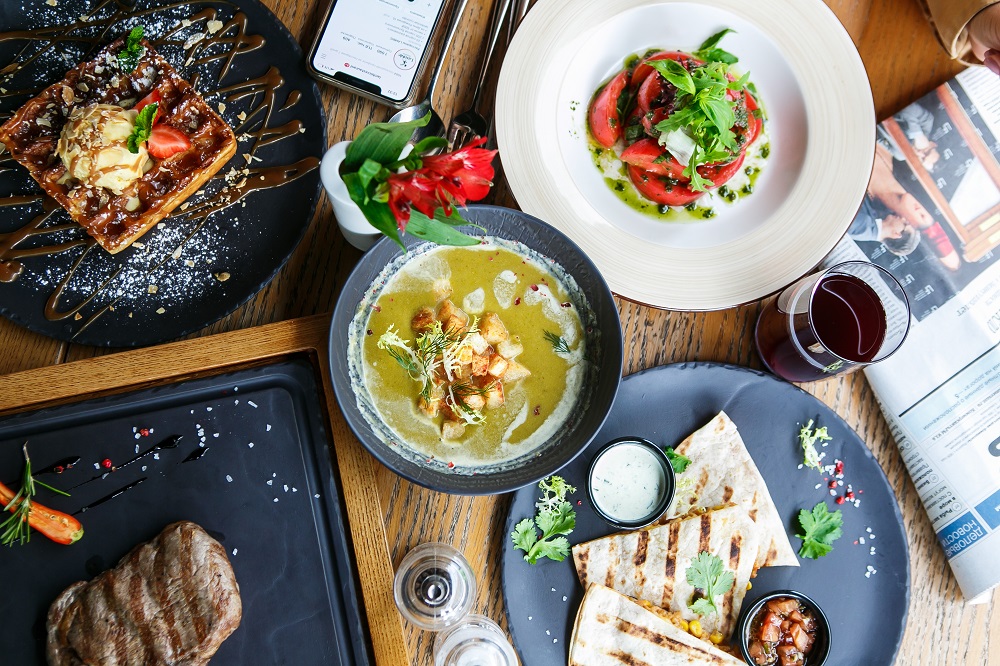
How did business lunch historically come about?
A business lunch is a lunch for busy people served in restaurants during certain hours, most often between 12 and 15. It includes tasty, hearty but easy-to-prepare dishes so that you can have time to eat during your lunch break. And business lunch is also relatively inexpensive compared to the regular menu, which also makes it attractive to office workers. Each of us has been to a restaurant for business lunch at least once in our lives, but not many people know its history. Let’s fix that! How it all began Business lunch appeared in England in 1706. In those days, businessmen did not have their own offices, and all important issues were solved in restaurants, over a shot of cognac or a cup of coffee and a cigar. Tea was not served in such places — the drink was considered rare and expensive, and it was more often preferred by women, who were not allowed in places where men drank alcohol and smoked tobacco. Restaurateur Thomas Twining decided to kill several birds with one stone at once — he opened a tea room at his restaurant and introduced the drink into everyday life, excluding alcohol on principle. The news that there was a quiet place where you can quietly negotiate, soon spread throughout London, and gradually the restaurant acquired a reputation as a business center. And the snacks served with tea and sandwiches, which were invented in the same England a little later, began to be called business lunch — that is, a lunch at which all business matters could be resolved. In our country, the convenience of business lunch was appreciated a little later — only in the 19th century, and it was served exclusively in inns. And in the days of the Soviet Union it changed its name altogether, becoming a «set lunch». In inexpensive establishments this phrase is still used today, while decent restaurants have returned the business lunch to its usual name, although the principle of the three-course menu has been preserved since the Soviet times. Where to try Today, business lunches are offered by most of the capital’s establishments. Usually they are a standard set of soup, salad and hot food, sometimes they can be supplemented with drinks and desserts. At the same time, the dishes themselves may vary, and it usually depends on the cuisine offered by the restaurant. There are business lunches and in the menu of Belgian brasseries Lambic. And it bears little resemblance to the Soviet «complex lunch» — here we are rather talking about refined cuisine. For example, you can order cheese soup with shrimps, fish and chips with tartar sauce, bruschetta with chicken liver with caramelized onions for only 790 rubles. Salad+soup" or ‘salad/soup+hot food’ sets will cost you even cheaper. And since Lambic is a beer restaurant, you can ask for a glass of refreshing beer to pair with the dishes, breaking all Thomas Twining’s principles. We are waiting for you for lunch!
10 May 2024
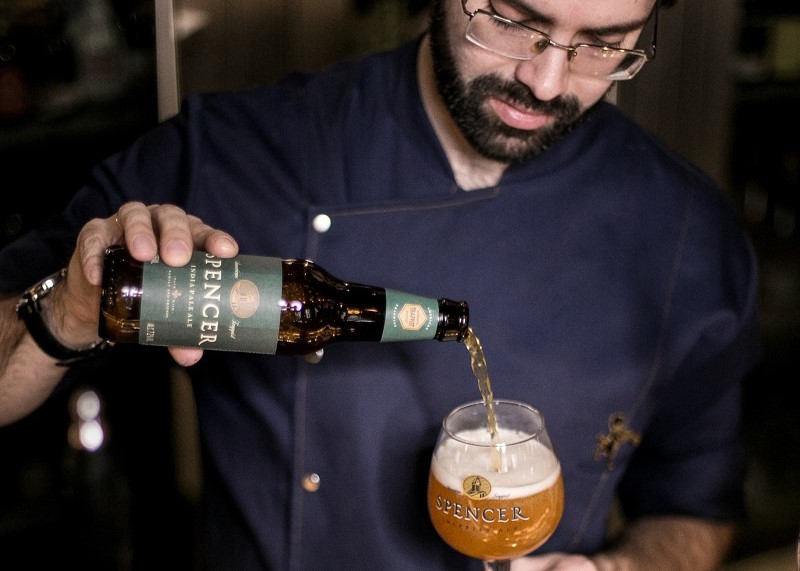
It's a match: how to taste beer properly to love it
Why do some people love the flavor of beer, while others feel nothing but bitterness? Of course, everyone’s tastes are different, but it’s possible that some people simply taste it wrong. The temperature at which the drink is served, the glass into which it is poured, even the appetizer — everything matters. We tell you how to drink beer to feel all the flavor nuances. Five steps to the perfect taste The first thing to do is to pick the right beer you want to taste. You shouldn’t force yourself to try something you’re guaranteed not to like. Pay attention to the color of the bottle (in a container made of dark glass the drink is better stored), color, density. For example, light and transparent beer will almost certainly not have a grain flavor, and the flavor itself will be light and refreshing. A drink of a more saturated hue — from straw to amber — is likely to have bright malt notes in the flavor, which will be manifested by caramel, biscuit and dried fruits. In a dark beer, the nuances will be more «heavy» — smoke, coffee, chocolate and so on. Density also matters — the higher it is, the brighter the flavor will appear. In order for beer to fully reveal its flavor, it is important to serve it at the right temperature. For different varieties it can vary, but on average it is 8-10 degrees. Dark malts, such as stouts, should be served even warmer. When you pour the beer, do not rush to taste it, first assess the aroma. If the beer is of good quality, you can distinguish many pleasant odors in it. It works the same way with food: food that smells good seems more appetizing. When tasting, the main rule is to take your time. Take a sip, hold the beer in your mouth for a while and only then swallow. At first you will feel the freshness and sourness of the bubbles released from the drink. The second phase is the most vivid flavor: sweetness or bitterness. Don’t concentrate on it: once your brain gets used to the dominant flavor, you will be able to taste the others. And at the very end, you will taste the aftertaste, which can also be different, but always pleasant — if, of course, you drink a quality drink. And, of course, you should not forget about the glass into which you pour the beer and the appetizers you serve with it. Properly selected glassware will also help to reveal the taste nuances, and good appetizers — to emphasize them. It’s best to choose both based on the variety. Many brewing companies in their blogs make recommendations in which glass and with which dishes it is better to serve this or that drink. And if you don’t want to study the question yourself, come to any beer restaurant of the Lambic chain. We will serve beer in the right glass and at the right temperature, as well as advise you on what food to order with it. Such a tasting will definitely be a success!
10 May 2024
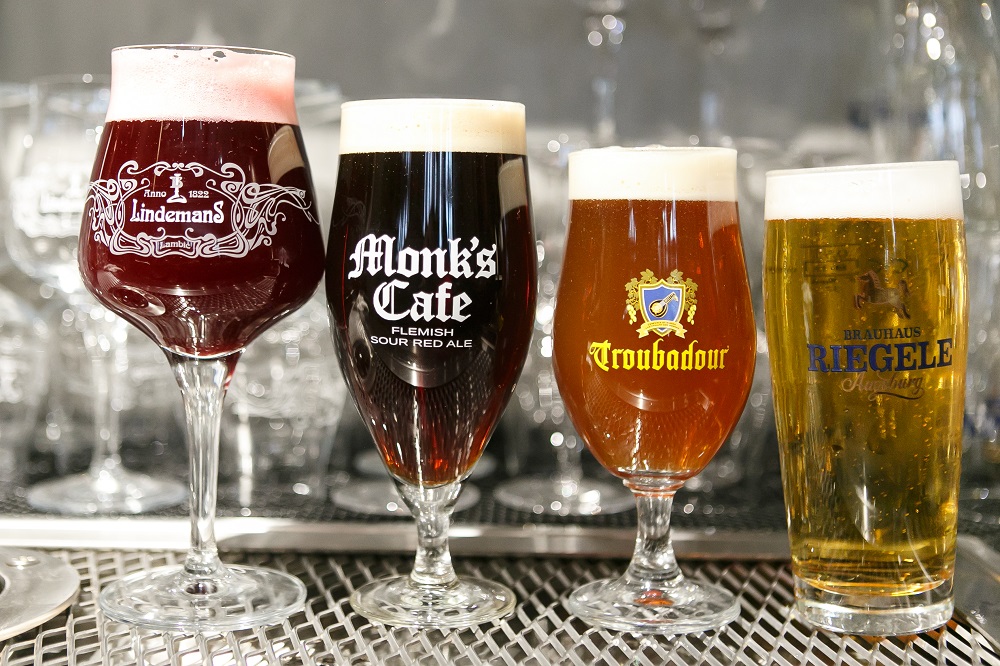
A detailed guide to beer: composition, varieties and characteristics
For many people it’s enough just to like beer and regularly treat themselves to a glass or two of their favorite beer. But some people want to know more about beer. If you’re one of the latter, this guide is for you — we’ll tell you what beer is made of, what styles exist and what characteristics to look for when choosing a drink. Composition What immediately comes to mind is «malt, cold, water and brewer’s conscience», as in the old commercials. In general, this is true — the basic ingredients remain the same regardless of the variety. There are exceptions — for example, in Gruyte, which appeared before the spread of hops, a mixture of spicy herbs is added instead. But such cases are isolated. And the main ingredients, which are the mainstay of most varieties, are only four: — hops - gives the drink a pleasant bitter taste, makes the foam more stable, is a natural preservative, affects the aroma depending on the region where it was grown;— malt - shapes the taste, color, body and aroma of the beer. It is the malt that contains the enzymes that turn starch into fermentable sugars, which are then broken down into alcohol and carbon dioxide. Barley malt is most commonly used in brewing, but rye, wheat, rice and even corn malt are also used;— yeast - there are about 200 varieties, and each variety has a different effect on the flavor and quality of the beverage. Yeast can be top and bottom fermentation, as well as wild yeast, thanks to which spontaneous fermentation takes place;— water - the better it is, the more flavorful the drink will be. In the past, beer varieties differed depending on the region, not least because of the quality of the water and the presence of minerals in it. Today, brewers are increasingly using distilled water and adding beneficial substances to it. Varieties There are dozens of them — it is impossible to list them all in one article. Nevertheless, all varieties can be divided into two large groups: top-fermented (ales) and bottom-fermented (lagers). Spontaneous fermentation varieties and hybrids can also be distinguished separately. Let’s consider each group in order. Top fermented varieties Ale is a drink with a fairly high alcohol content and a dry, rich flavor dominated by subtle fruity notes. There are several varieties of ale: — Belgian ale. The main feature is the variety, which you will not find in any other group. There are both light varieties with bubbles, like champagne, and dark varieties with a more intense flavor. However, all Belgian varieties have one thing in common — phenolic flavors: clove, spicy, herbal. — Wheat ale. It is brewed on the basis of wheat malt, the share of which is from 50 to 68%. This gives it a recognizable «bread» aroma. The color of wheat ale is usually light straw. — Porter. A brown beer of moderate strength with a restrained roasted character and bitterness. There can be a spectrum of roasted flavors, usually without burnt qualities, and there is often a chocolate and caramel malt profile. — Bitter. The base of the drink is light barley and lots of hops. The flavor is light and refreshing, with bright fruity notes. The color is able to vary from light yellow to dark yellow. — Pale ale. A light bronze-colored beer with a lower hop content than a bitter. It has a pleasant flavor with distinctly bitter and spicy notes. — Stout. The base of the drink is made up of several varieties of burnt malt, thanks to which coffee tones appear in the flavor. It has a deep chocolate color and is considered the darkest beer. Bottom-fermented varieties Lager is the most popular beer on all continents: it accounts for about 80-85% of the world’s total production. It can be both dark and light — the shade of the drink determines the degree of roasting of the malt. There are several main varieties in this group: — Light lager. A classic beer with a light hop flavor, without the pronounced sweetness or bitterness typical of ales. — Dark lager. The color of the drink varies from dark amber to dark brown, the taste is dominated by hints of caramel and chocolate. It is considered a «dessert» version of the classic light lager. — Pilsner. The most popular variety of lager, made from light malt and soft water. The color of the drink is golden, the taste is hoppy, velvety, sometimes slightly sweet. — European amber lager. Has a well-balanced malt flavor with notes of roasted grains and a very beautiful amber color. — Smoked Lager. A dark brown colored beer based on smoked barley grains. Smoky notes are clearly noticeable in the taste and aroma. — Ice beer. Without waiting for the final fermentation, the drink is cooled until ice crystals appear. Then they are removed to get a variety with double alcohol content. The color of the beer is golden yellow. — Bock. A high-strength drink with a classic «lager» flavor. It differs from other varieties by a long settling time. The color can be either light or dark. Spontaneously fermented beers and hybrids Lambic is an exclusively Belgian spontaneously fermented beer. It is brewed during the cold season in a certain area in the Seine Valley. Wild bacteria from the air are introduced into the tank where the wort is kept, which triggers the fermentation process. This process gives the drink its characteristic flavor: grapey, cider-like, dry, often with a tart aftertaste. Lambic can be young, aged for up to a year, and mature, aged for 2 to 4 years. Hybrids combine the qualities characteristic of both top and bottom fermented varieties. They are brewed according to ancient recipes, and exclusively wheat or barley malt is used as raw material. The most striking representatives of hybrids are German altbiers. Their flavor is dominated by fruity notes, and the aftertaste has hints of hops. Characteristics Beyond verbal descriptions, there are clear criteria by which beers are judged. Let’s list a few of the main ones: — IBU is the degree of bitterness of the beer. But not always a drink with a higher index will seem more bitter — the taste can be softened, for example, by essential oils in the composition; — ABV - the alcohol content of the beer, expressed as a percentage; — OG and FG - the initial and final density of the beverage. Calculated before the start and after the end of fermentation, respectively. Indicates the concentration of the mass fraction of malt sugar in the wort. The denser the variety, the more intense flavor it can have. — drinkability - a term used by tasters to indicate how well a beer drinks. «drinkable» beers traditionally include eurolagers, pilsners, Irish stouts and brown ales. Of course, you can study the features and characteristics of beer for a long time, but we told you about the most basic ones. And if you want to back up the theory with practice — come to any beer restaurant of the Lambic chain. Hundreds of varieties to suit every taste are waiting for your tasting!
10 May 2024
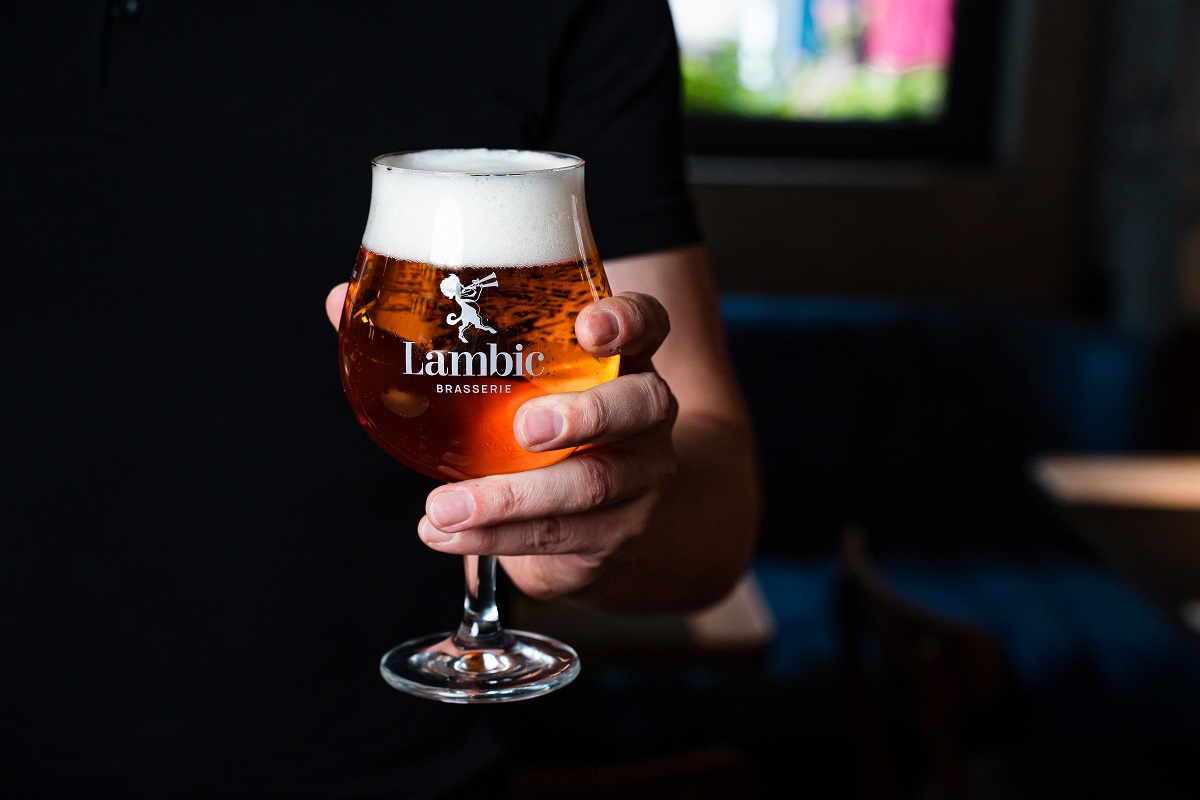
Craft beer glasses: your guide to serving beer properly
Why is traditional kölsch beer in German beer restaurants only served in narrow, elongated, small glasses? Why is it that local brews in other countries are served, for example, in pint glasses? It’s not a marketing move — the point is that in a properly shaped vessel beer better reveals its flavor and aroma, as well as retains a stable foam. And if you choose the right container, you can even at home to get maximum pleasure from your favorite varieties. To help all beer lovers — our guide to glasses! A pint of Nonic Suitable for styles: india pale ale, porter, brown ale, cider This is a versatile glass that is ideal for drinkable, low-alcoholic varieties. There are three types of pint glasses, the most popular being the 0.6 liter Nonic from the UK. It is a container with slightly curved walls that widen slightly at the bottom. Snifter Suitable for styles: stout, porter, barleywine The same «pouzat» glass that is also often seen in beer restaurants. The deep bowl retains the distinct flavor of the drink well, and the short stem allows it to be slightly warmed by human body heat, thus bringing out the aroma. The snifter is ideal for aromatic brews such as strong ales. Tulip Suitable for styles: Belgian ale, wild ale This glass is somewhat like a snifter, but with an elongated rather than narrowed neck. The tulip retains foam well, and the container also helps to capture volatile substances. A great choice for strong styles, although experts say it’s the perfect shape for any variety if you plan to drink just one glass. Pilsner Suitable for styles: lager, pilsner, bock A glass for serving all light lagers, including pilsners. It has a long shape with pronounced straight lines and a slightly tapered neck, which helps to stabilize the foam. The pilsner is also ideal for showing off the color and carbonation of the drink. Weitzen Suitable for styles: hefeweizen, witbier A smoothly shaped glass with a wide neck, originally from Germany. It is ideal for serving a variety of wheat beers, such as Hefenweizens and Belgian Witbiers. In such a glass, the flavor of the beverage will unfold well and a lush, high foam will be retained. Teku Suitable for: double IPA, saison, lambic This 0.3-liter glass is a relatively recent development and rather resembles a version of the famous tulip, but with sharper corners. The container well reveals the flavor of the drink and preserves the foam, and the long stem prevents it from heating up. By the way, in Lambic restaurants beer is served only in the right glasses. Come and see for yourself!
27 March 2024
